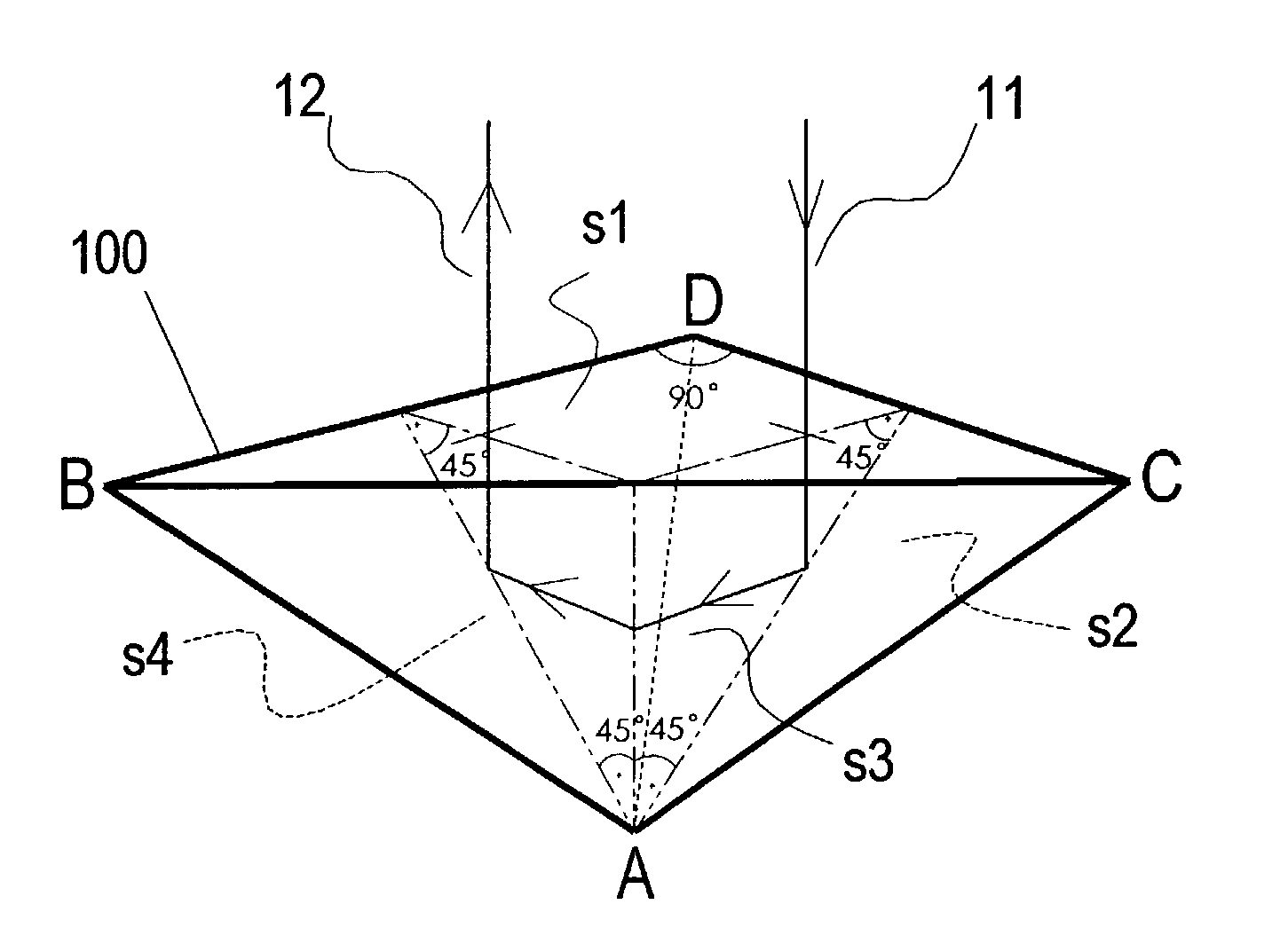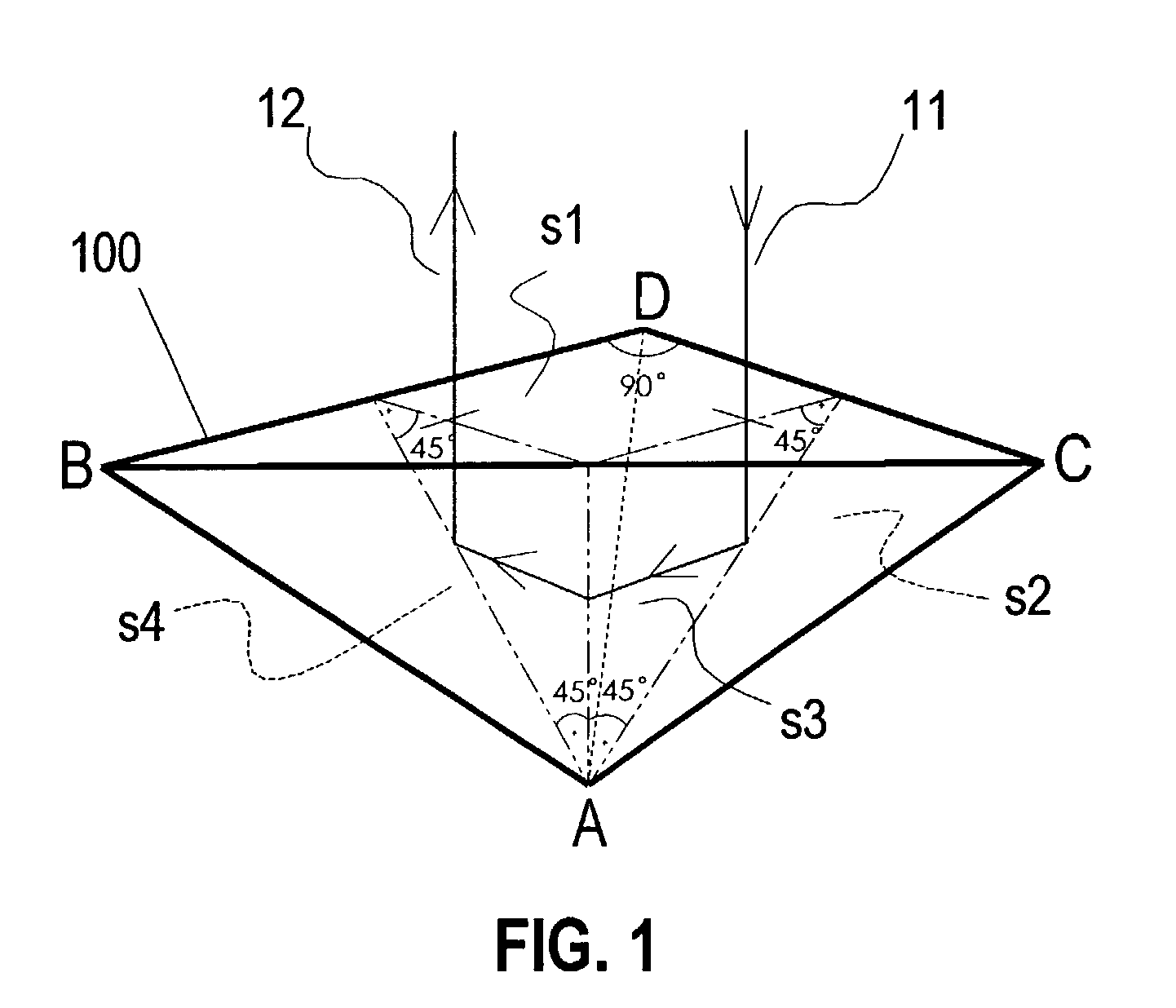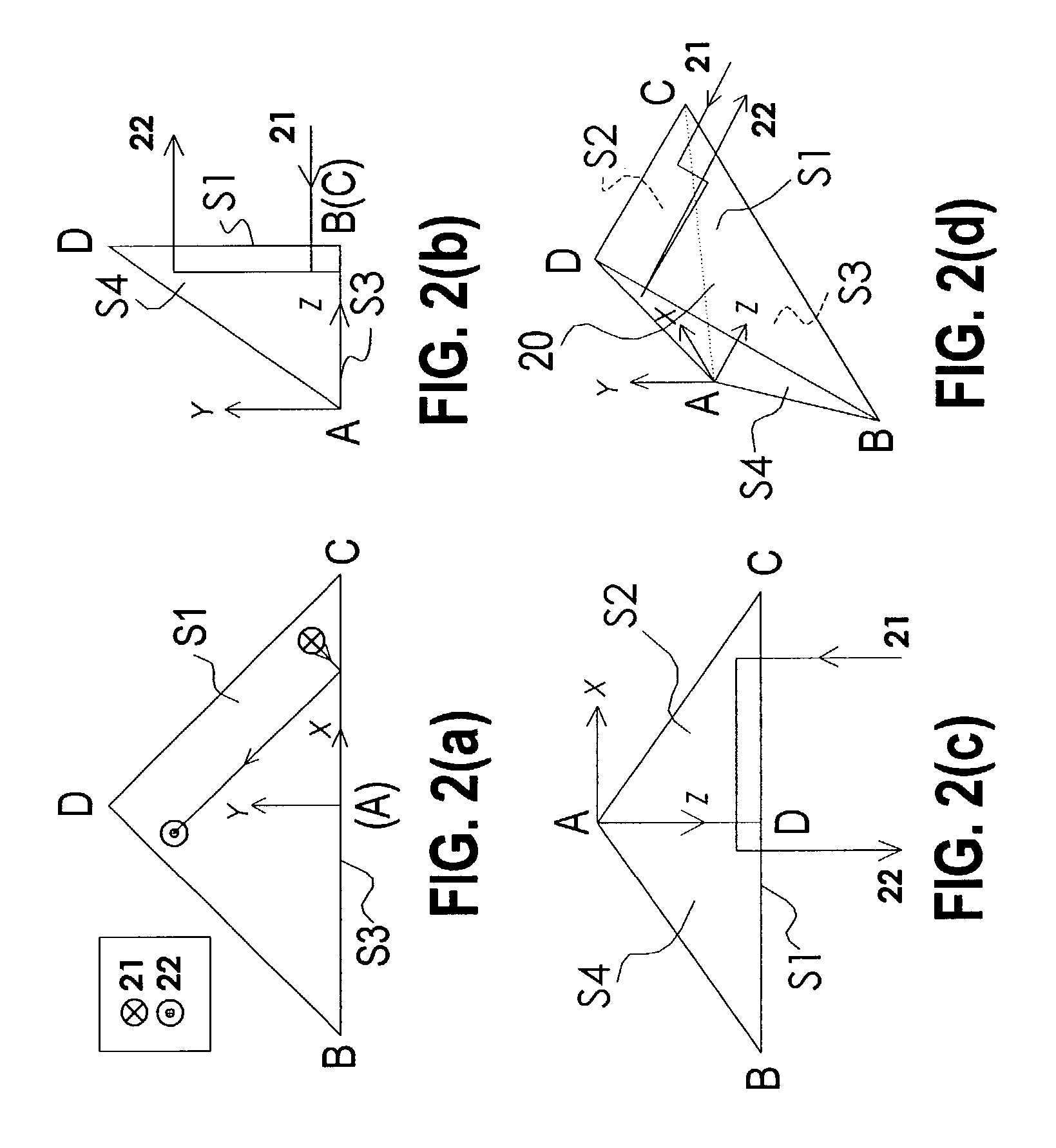Polarization conversion and recycling method and apparatus
- Summary
- Abstract
- Description
- Claims
- Application Information
AI Technical Summary
Benefits of technology
Problems solved by technology
Method used
Image
Examples
Embodiment Construction
[0041]The present invention is further described based on several sample embodiments, but embodiments of this invention are not limited to these examples. All embodiments demonstrate the usefulness of the invention and its versatility in a variety of polarization rotating, converting, and recycling applications.
[0042]FIG. 1 is a conceptual construction view showing a model of HP reflector, which comprises four triangular surfaces with four vertexes A, C, B, and D, wherein the surface s1 (BCD), in the shape of an isosceles right triangle, denotes the incident light entrance surface and light exit surface; the surface s2 (CDA), surface s3 (BAC) and surface s4 (DBA) denote three reflecting surfaces adjacent to each other. The reflecting surface s3 is perpendicular to the entrance / exit surface s1. The other two reflecting surfaces, surface s2 and surface s4, are both at a 45 degrees angle with respect to surface s1 to form a half-pyramid shaped reflector.
[0043]To illustrate the basic pr...
PUM
 Login to view more
Login to view more Abstract
Description
Claims
Application Information
 Login to view more
Login to view more - R&D Engineer
- R&D Manager
- IP Professional
- Industry Leading Data Capabilities
- Powerful AI technology
- Patent DNA Extraction
Browse by: Latest US Patents, China's latest patents, Technical Efficacy Thesaurus, Application Domain, Technology Topic.
© 2024 PatSnap. All rights reserved.Legal|Privacy policy|Modern Slavery Act Transparency Statement|Sitemap



